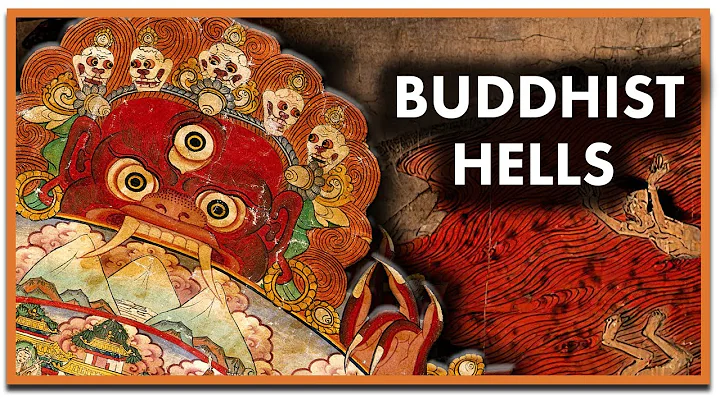When we go to temples or listen to some stories related to Buddhism, we always hear the word " Eight Auspicious ". Moreover, when it comes to eight auspicious people, they always use a very pious attitude, and their eyes naturally reveal admiration. The reason is very simple. These eight auspicious people are related to Buddha Sakyamuni .

The so-called eight auspiciousness refers to eight things. More importantly, these eight things correspond one by one to the body parts of Sakyamuni. Later Buddhism gradually turned them into representatives of Buddhas. So what are they? Today, let’s introduce it together.
Eight auspiciousness refers to treasure caps, Pisces, lotus, vases, Dharma snails, auspicious knots, honorific banners, and Dharma wheels. In the eyes of secular people, these nouns may be very ordinary things, especially during the Ming and Qing dynasties, the patterns of these things can be seen on many common household instruments, such as blue and white porcelain . But in the Buddhist system, these eight auspiciousnesses have very profound meanings and must not be blasphemed.
The first is the treasure.
Baocun is an umbrella in the secular world. In ancient times, umbrellas were not necessarily used as equipment for sun protection and rain. When many princes and nobles traveled, they would hold umbrellas on their mounts and bodies, which was the treasure cap.

This is a kind of majestic ceremonial guard. In the Buddhist sense, the Baogai and Sakyamuni's head are connected, symbolizing supremacy, and because it can diverge and shrink, shelter the world from wind and rain, and also has the meaning of protecting the world.
The second is Pisces.
Pisces pattern also has a very noble symbolic meaning in Buddhism, which refers to the eyes of Sakyamuni. People’s eyes can see all kinds of colors, while Buddha’s eyes can see through all the fog. This prayer can bring wisdom to people, eliminate doubts, and enlighten sentient beings.
The third is lotus.
Lotus is also one of the most common representative patterns related to Buddhism. In many literary works, great Buddhist masters will sit on the lotus seat.

In the eyes of the world, lotus originally symbolizes noble quality, and in the Buddha system, it is used to symbolize the life and spirit of Sakyamuni. Buddhist disciples also believe that lotus has four colors: fragrance, purity, softness and joy, so it also symbolizes the true nature of Buddhism.
The fourth is the treasure vase.
The most common one is the clean bottle held by Guanyin Master in his hand, with willow branches inserted inside, Sun Wukong burned all over his body, and a drop of water in the clean bottle can make him heal.
The Buddhists contacted the vase to Sakyamuni's head and neck, and believed that it was the source of all Buddhist teachings, and people in the world can gain countless benefits based on this.

The fifth is the method snail.
When people talk big in the secular world, they will implicitly say that he is blowing the magic snail. In fact, in the Buddhist system, the Dharma snail refers to the voice of Sakyamuni speaking.
Because there was no amplification device in ancient times, Sakyamuni needed to explain it himself when he preached. The "snail number" can spread the sound farther and make people hear it more clearly.

But when you need to pay attention, the thread on the orthodox normal snail turns right to represent the three horizontal lines on Sakyamuni's neck,
The sixth is auspicious knot .
is also called endless knot, which represents Sakyamuni's heart. It looks similar to "卍" in appearance. Any two lines are connected to the end without a partition, and each connection is an absolute right angle.
Buddhism uses this to represent the endless connection between movement and stillness of Buddhism.
The seventh is Zunsheng Banner.
The so-called "bang" was a banner in ancient times, such as the army's commanding flag, general flag, etc., which could command and lead soldiers and play a role in the morale of the army.

Buddha's righteousness believes that the supreme and righteous enlightenment of Sakyamuni. Under his guidance, the disciples defeated the inner demons, resisted the Demon Lord and won, and finally comprehended the right path.
The eighth is the golden wheel.
Golden wheel was a weapon in ancient times, and it was named after its round appearance. Buddhism believes that the golden wheel can be taught in a harmonious and invincible way. The most rare thing is that it can eliminate all nameless troubles and strengthen the mind of practice.
Buddhism refers to the golden wheel to Sakyamuni's feet, and some people also believe that it refers to Sakyamuni's hands, which possesses the light of wisdom.
In short, the eight auspicious Buddhists have become a representative symbol of Buddhist culture today. From ordinary things to special meanings, they are all slowly formed after Sakyamuni Nirvana.

Later generations believe in Buddhism collectively call them the Eight Auspiciousness, hoping that they will practice diligently by offering to the Eight Auspiciousness. Even secular people will gain more happiness and happiness. Therefore, after the Yuan, Ming and Qing dynasties, these patterns were often seen on some ordinary utensils.







![[English] Who Am I - Lecture 1 - Ven. Guan Cheng - DayDayNews](https://i.ytimg.com/vi/KU0fUs2It5o/hq720.jpg?sqp=-oaymwEcCNAFEJQDSFXyq4qpAw4IARUAAIhCGAFwAcABBg==&rs=AOn4CLDFpQUN_QwRfC7bmP4sUadq-RcYdg)
![A Moving Masterpiece 清明上河图 [English narration] - DayDayNews](https://i.ytimg.com/vi/kxff-4GktOI/hqdefault.jpg?sqp=-oaymwEcCOADEI4CSFXyq4qpAw4IARUAAIhCGAFwAcABBg==&rs=AOn4CLBtHGLeUpJNCYDJYnZTuISQ1N5Vag)


